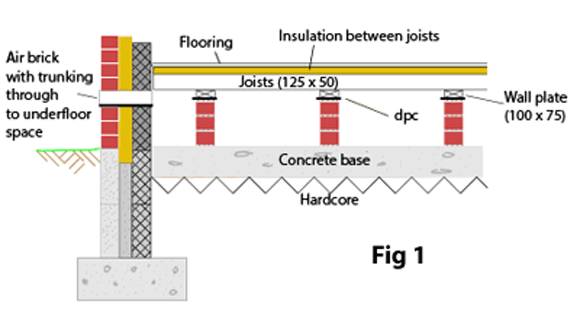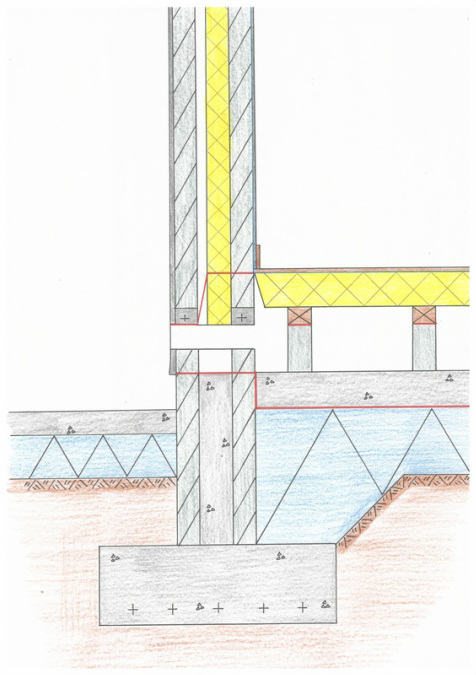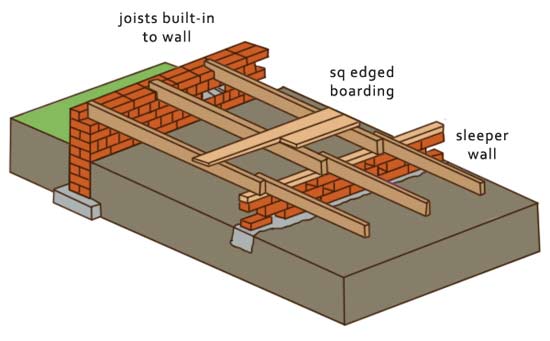Whether building a ground floor suspended timber floor or a first floor hollow floor we explain the different options and techniques that you can use in its construction.
Suspended timber floor construction methods.
Suspended timber ground floors consist of the finished timber floorboards being attached to floor joists which are suspended above the subfloor of the foundation.
Why use suspended timber floor.
A suspended timber floor is the chosen way for many builders and consumers because of the following facts.
It is more cost effective in residential areas.
This creates a small gap and allows ventilation and air movement to prevent damp forming in the timber joists.
Concrete floors are high mass and will act like a giant storage heater staying warm for many hours without any heat.
The ground should have a layer of concrete poured across and there should be a ventilated gap of at least 150mm between the underside of the timbers and the concrete to prevent moisture.
Just how well this works depends to a great extent on the floor construction.
The floor can be formed in various ways using timber joists precast concrete panels block and beam system or cast in situ with reinforced concrete.
Building and understanding a suspended or hollow timber floor.
It has simply the best construction way for sloping sites low lying areas or sites with bad climatically conditions.
These floor joists are raised above the subfloor on small supporting walls called tassel walls or sleeper walls.
A suspended floor is a ground floor with a void underneath the structure.
09 timber flooring design guide page 6 1 timber flooring and floor finishes 1 1 movement in timber floors prior to discussing timber flooring products it is important to understand the relationship between timber humidity in the air surrounding it and the dimensional changes that occur as the result of changes in humidity.
All you need to know.
Most self builders now fit underfloor heating into their homes.
Suspended timber 58 m.
Different types of ground floor suspended flooring.
Suspended timber floors need to have spaces underneath ventilated via air bricks through the outer walls and gaps in any internal walls so that the air can move across the building underneath the floors to prevent the build up of moisture in the timber which could lead to fungal attack.
Suspended timber floors which are typically found in older houses are normally made from timber floorboards which are then attached to joists just above the foundations of a house.
As a requirement of the building regulations the structure should be protected against the growth of weeds and other plant life.
We explain how hollow or suspended floors are made and what the key building regulations that affect them are.









